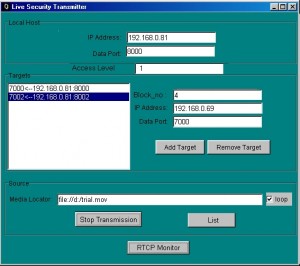The main objectives of this ONLINE VIDEO TRANSCEIVER USING RTP the current status of the each and every project. To maintain the details of each person, to know about him. And to transmit the required document which is in video format from one side to other side.
The video document will be transceived from one system to the other, though it act as internet but it is faster and live. There is on need to wait for a long period to download the file, its is quite easier.
Online Video Transceiver Using RTP Project Modules:
Authentication With The Server:
Every system before starting to transmit or receive Live Media data need to be authenticated by the authenticating server located at any one of the buildings.
SESSION TRACKING:
In the previous module the captured Live media is transmitted to a specific receiver (Unicasting). Now, the live media is needed to be transmitted to a list of receivers (Multicasting). And we need to keep track of the session for each media track of the processor.
CREATE PLAYER AND RTP MANAGERS:
On Receipt of RTP data from the different senders, the received data has to be processed separately. We need to create different players for viewing various media files collected at different ports from various senders. This is done through JMF.
RTP MONITOR
The RTCP traces RTCP packets such as Sender Reports, Receiver Reports and Sent packets.
Existing System :
The HTTP & FTP protocols are based on the transmission control protocol (TCP). TCP is a transport-layer protocol designed for reliable data communication on low –bandwidth, high-error-rate networks. When a packet is lost or corrupted, it’s retransmitted. The overhead of guaranteeing reliable data transfer slows the overall transmission rate.
For this reason, underlying protocols other than TCP are typically used for streaming media. One that’s commonly used is the User Datagram Protocol (UDP).UDP is an unreliable protocol; it does not guarantee that each packet will reach its destination. There’s also no guarantee that the packet will arrive in the order that they were sent. The receiver has to be to compensate for lost data, duplicate packets and packets that arrive may be out of order.
Currently there are many systems available for videoconference. These systems use the TCP/IP protocols for communication and also for transfer of frames from one system to another. Normally these systems can transmit and re-transmit the copy of the frames from the source or server. Some use the socket side programming for data transfer from server to the requested client.


hello sir how to run this project plz give complete information plz sir
I need this project